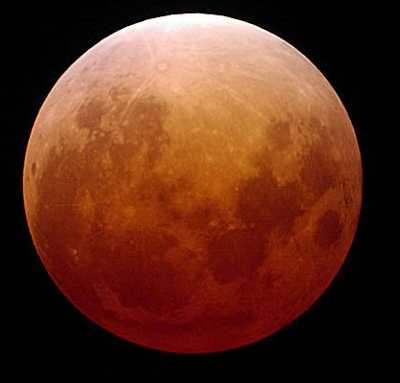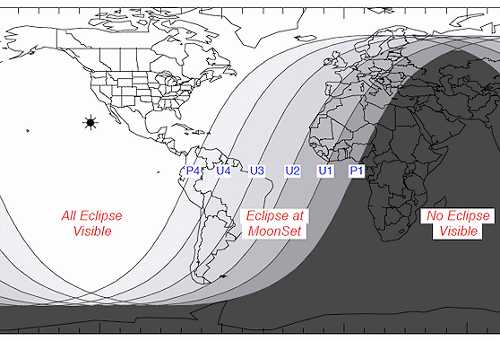
That is, except during a lunar eclipse.
See for yourself on Tuesday, Dec. 21, the first day of northern winter, when the full Moon passes almost dead-center through Earth's shadow. For 72 minutes of eerie totality, an amber light will play across the snows of North America, throwing landscapes into an unusual state of ruddy shadow.
The eclipse begins on Tuesday morning, Dec. 21st, at 1:33 am EST (Monday, Dec. 20th, at 10:33 pm PST).
At that time, Earth's shadow will appear as a dark-red bite at the edge of the lunar disk. It takes about an hour for the “bite” to expand and swallow the entire Moon. Totality commences at 02:41 am EST (11:41 pm PST) and lasts for 72 minutes.
If you're planning to dash out for only one quick look – it is December, after all – choose this moment: 03:17 am EST (17 minutes past midnight PST). That's when the Moon will be in deepest shadow, displaying the most fantastic shades of coppery red.
Why red?
A quick trip to the Moon provides the answer: Imagine yourself standing on a dusty lunar plain looking up at the sky.
Overhead hangs Earth, nightside down, completely hiding the sun behind it. The eclipse is under way.
You might expect Earth seen in this way to be utterly dark, but it's not. The rim of the planet is on fire!

As you scan your eye around Earth's circumference, you're seeing every sunrise and every sunset in the world, all of them, all at once. This incredible light beams into the heart of Earth's shadow, filling it with a coppery glow and transforming the Moon into a great red orb.
Back on Earth, the shadowed Moon paints newly fallen snow with unfamiliar colors – not much luster, but lots of beauty.
This lunar eclipse falls on the date of the northern winter solstice.
How rare is that?
Total lunar eclipses in northern winter are fairly common. There have been three of them in the past 10 years alone.
A lunar eclipse smack-dab on the date of the solstice, however, is unusual.
Using NASA's 5,000 year catalog of lunar eclipses and JPL's HORIZONS ephemeris to match eclipses and solstices, author Dr. Tony Phillips had to go back to the year 1378 to find a similar “winter solstice lunar eclipse.”
Enjoy the show.
Dr. Tony Phillips works for the National Aeronautics and Space Administration.
Follow Lake County News on Twitter at http://twitter.com/LakeCoNews , on Facebook at http://www.facebook.com/pages/Lake-County-News/143156775604?ref=mf and on YouTube at http://www.youtube.com/user/LakeCoNews .